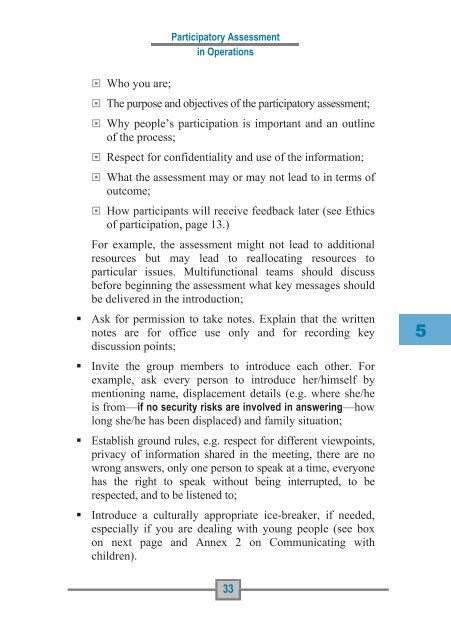Participatory Assessment - Refworld
Participatory Assessment - Refworld
Participatory Assessment - Refworld
- No tags were found...
You also want an ePaper? Increase the reach of your titles
YUMPU automatically turns print PDFs into web optimized ePapers that Google loves.
in Operations• Who you are;• The purpose and objectives of the participatory assessment;• Why people’s participation is important and an outlineof the process;• Respect for confidentiality and use of the information;• What the assessment may or may not lead to in terms ofoutcome;• How participants will receive feedback later (see Ethicsof participation, page 13.)For example, the assessment might not lead to additionalresources but may lead to reallocating resources toparticular issues. Multifunctional teams should discussbefore beginning the assessment what key messages shouldbe delivered in the introduction;• Ask for permission to take notes. Explain that the writtennotes are for office use only and for recording keydiscussion points;• Invite the group members to introduce each other. Forexample, ask every person to introduce her/himself bymentioning name, displacement details (e.g. where she/heis from—if no security risks are involved in answering—howlong she/he has been displaced) and family situation;• Establish ground rules, e.g. respect for different viewpoints,privacy of information shared in the meeting, there are nowrong answers, only one person to speak at a time, everyonehas the right to speak without being interrupted, to berespected, and to be listened to;• Introduce a culturally appropriate ice-breaker, if needed,especially if you are dealing with young people (see boxon next page and Annex 2 on Communicating withchildren).345
















